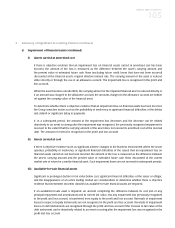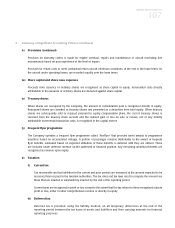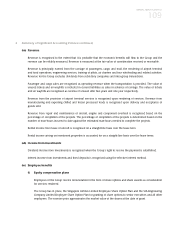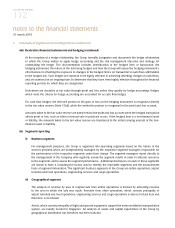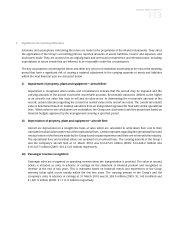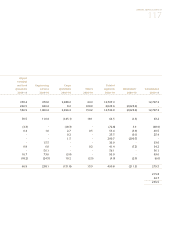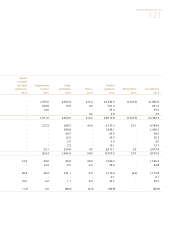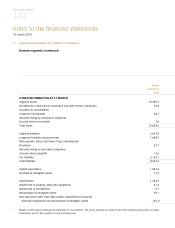Singapore Airlines 2010 Annual Report Download - page 116
Download and view the complete annual report
Please find page 116 of the 2010 Singapore Airlines annual report below. You can navigate through the pages in the report by either clicking on the pages listed below, or by using the keyword search tool below to find specific information within the annual report.SINGAPORE AIRLINES
114
3 Significant Accounting Estimates (continued)
(iv) Frequent flyer programme
The Company operates a frequent flyer programme called “KrisFlyer” that provides travel awards to programme
members based on accumulated mileage. A portion of passenger revenue attributable to the award of frequent
flyer benefits is deferred until they are utilised. The deferment of the revenue is estimated based on historical
trends of breakage and redemption, which is then used to project the expected utilisation of these benefits. Any
remaining unutilised benefits are recognised as revenue upon expiry. The carrying amount of the Group’s and
the Company’s deferred revenue at 31 March 2010 was $460.1 million (2009: $500.8 million).
During the financial year, the Company revised the estimated breakage rate. The impact of the revision in
estimate is an increase of $75.4 million in revenue.
(v) Aircraft maintenance and overhaul expenditure under power-by-hour agreements
The Group has entered into several power-by-hour (“PBH”) engine maintenance agreements with engine original
equipment manufacturers. The monthly payments are based on the number of flying hours flown. A portion of
the cost is expensed at a fixed rate per hour during the term of the PBH agreement. The remaining payments
made are recorded as an advance payment, to the extent that it is to be utilised through future maintenance
activities, if any, or capitalised upon completion of an overhaul.
The proportion of the amount to be expensed off and capitalised is determined based on the best estimate as if the
engine maintenance and overhaul costs are accounted for under the time and material basis. The carrying amount
of the advance payment relating to PBH agreements for the Group and the Company at 31 March 2010 was
$325.8 million (2009: $139.5 million) and $278.0 million (2009: $89.9 million) respectively. The maintenance
and repair costs covered by PBH agreements which are expensed off during the year amounted to $37.8 million
(2008-09: $77.8 milion) for the Group and $35.8 million (2008-09: $75.7 milion) for the Company.
4 Segment Information (in $ million)
For management purposes, the Group is organised into business units based on the nature of the services provided,
and has five reportable operating segments as follows:
(i) The airline operations segment provides passenger air transportation.
(ii) The airport terminal and food operations segment is formed by aggregating the airport services segment and
the food solutions segment. The airport services segment provides mainly airport terminal services, such as air
freight handling services, passenger services, aviation security services, baggage handling services and apron
services to the Group’s airline customers. The food solutions segment provides mainly inflight catering, food
processing and distribution services.
(iii) The engineering services segment is in the business of providing airframe maintenance and overhaul services
and line maintenance and technical ground handling services. It also manufactures aircraft cabin equipment,
refurbishes aircraft galleys, provides technical and non-technical handling services and repair and overhaul of
hydro-mechanical aircraft equipment.
notes to the financial statements
31 march 2010



